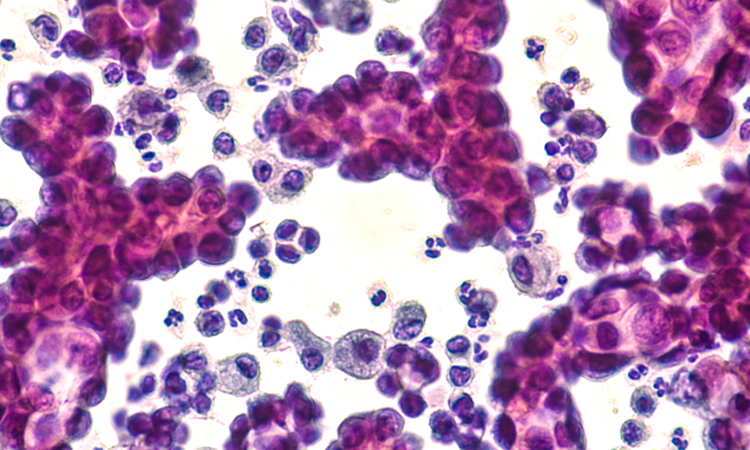Circular RNA revealed as drug target for lung squamous cell cancer
Posted: 28 September 2020 | Victoria Rees (Drug Target Review) | No comments yet
After finding that the circular RNA called CDR1as plays a role in driving metastasis, researchers have identified it as a potential target for lung squamous cancer.


New cancer research has revealed the possibility of targeting a specific circular RNA, known as CDR1as, to attack lung squamous cell cancer. The study was led by scientists at the University of North Carolina at Chapel Hill (UNC) Lineberger Comprehensive Cancer Center, US.
Previous researchers have dismissed RNAs that joined ends to form circles as splicing errors. However, former UNC Lineberger director Dr Ned Sharpless, among others, revealed that these RNAs are highly abundant and compromise a new class of RNA called circRNAs.
Many circRNAs, including CDR1as, are thought to work by targeting and inhibiting other RNAs. However, after years of investigation, the researchers discovered that one of the keys to how CDR1as works was through an unstudied protein called CDR1. With the help of several collaborators, they found the answer by looking at Golgi trafficking.
Biomarkers aren’t just supporting drug discovery – they’re driving it
FREE market report
From smarter trials to faster insights, this report unpacks the science, strategy and real-world impact behind the next generation of precision therapies.
What you’ll unlock:
- How biomarkers are guiding dose selection and early efficacy decisions in complex trials
- Why multi-omics, liquid biopsy and digital tools are redefining the discovery process
- What makes lab data regulatory-ready and why alignment matters from day one
Explore how biomarkers are shaping early drug development
Access the full report – it’s free!
Golgi bodies ensure that the proteins a cell produces exert their designed function. For cancer cells, this means that Golgi must reposition themselves so the cells can metastasise to other parts of the body. This new research uncovers some of the first connections of circRNAs with Golgi trafficking.
“We found that CDR1as plays a large role in driving metastasis in lung squamous cancer,” said study senior author Associate Professor Chad Pecot. “However, because nothing was really known about CDR1, the protein regulated by CDR1as, our journey was just beginning. We eventually determined that CDR1 in part operates by increasing Golgi trafficking, which we found to be critical to its role in helping cancer spread.”
The researchers say they will continue to explore both CDR1as and CDR1. According to Pecot, this circRNA and protein both represent attractive drug targets because they are usually not turned on in the rest of the body. Therefore, blocking them would be destructive to cancer cells but should not cause much toxicity to the rest of the body.
“The study of CDR1as is only just beginning and our research highlights a new mechanism for circRNA function that has implications beyond cancer biology,” said study first author Dr Emily Harrison.
“Cancer is revealing, at a rapid pace, that it has many more vulnerabilities than we previously believed, including the one we have elucidated, which undoubtedly means better treatment options ahead,” said Pecot. “I’m very hopeful, based on our work and much of what is being done in the field of drug development, that many new medicines are on the horizon.”
The results from this study on RNA are published in Cancer Research.
Related topics
Drug Targets, Oncology, Research & Development, RNAs, Targets
Related conditions
Lung cancer, Lung squamous cell cancer
Related organisations
University of North Carolina at Chapel Hill (UNC)
Related people
Associate Professor Chad Pecot, Dr Emily Harrison, Dr Ned Sharpless








